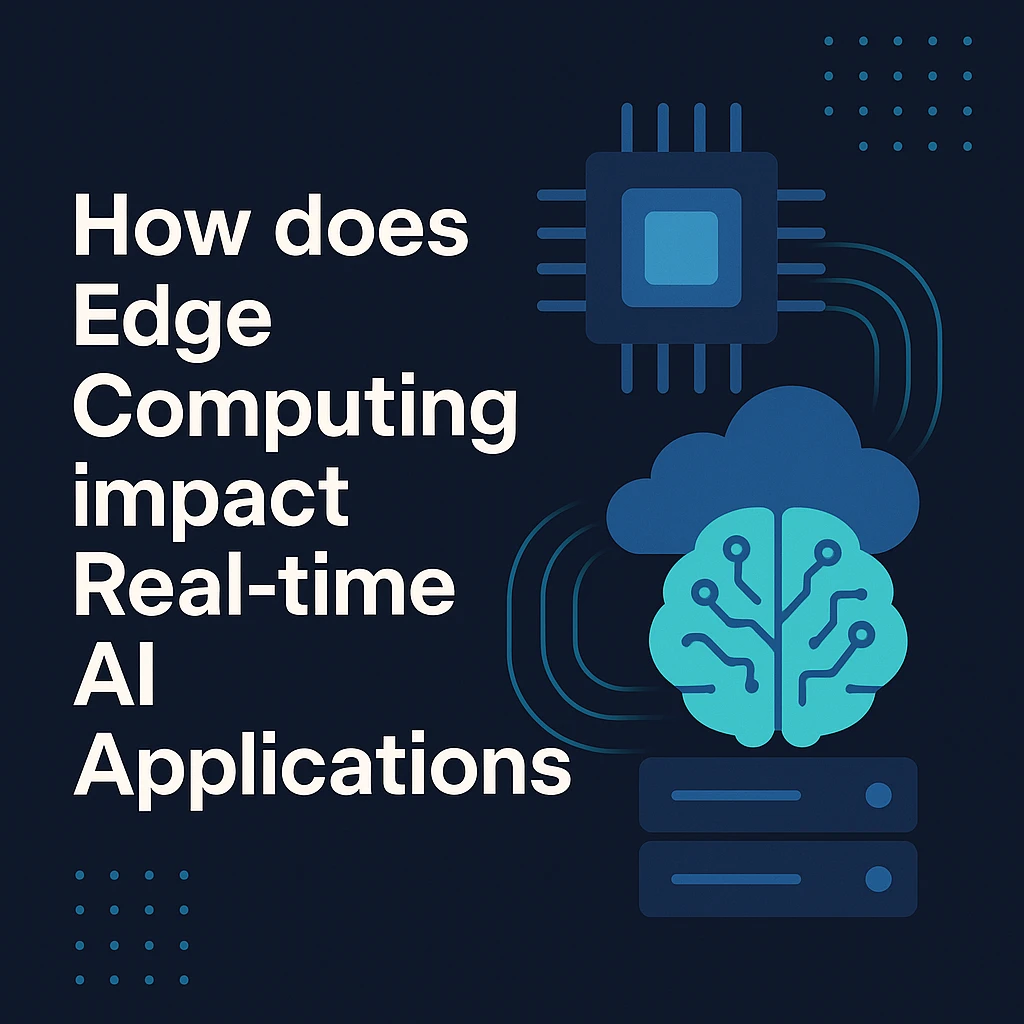Introduction:
Real-time AI applications, such as self-driving cars navigating congested streets or smart factories maximizing output, necessitate instant insights in today’s technologically advanced world. Edge computing excels in this situation by bringing data processing closer to the source rather than relying on remote cloud servers. However, how precisely does edge computing improve AI in real time? Let’s examine some real-world examples and dissect the benefits and difficulties.
1. Latency: Millisecond Decision-Making
Reducing Delay
Data doesn’t need to move back and forth to the cloud when AI models operate directly on edge devices, such as servers, local gateways, or the devices themselves. In situations where every millisecond matters, this substantial reduction in travel time could mean the difference between success and failure.
Immediate Response
Think about a self-driving car avoiding a sudden obstacle or a factory machine shutting down in an emergency. Edge computing ensures AI can make these split-second decisions without getting bogged down by network congestion or distant cloud servers.
2. Saving Bandwidth: Doing More with Less
Preprocessing Data Locally
Rather than streaming raw video or sensor data nonstop to the cloud, edge devices filter, aggregate, and send only the critical insights or anomalies. This approach drastically reduces bandwidth usage.
Lower Costs
Less data traveling back to the cloud translates directly into lower cloud storage and transmission expenses, freeing network resources for other essential tasks.

3. Privacy and Security: Safeguarding Private Information Local Data Management
The risk of exposure can be decreased by analyzing sensitive data at the source, such as biometric information or medical scans. This strategy aids businesses in adhering to stringent laws like GDPR and HIPAA.
Cutting Down on Vulnerability
There are fewer chances of hacking or interception when there are fewer data transfers. The overall security of your AI infrastructure is further strengthened by the hardware-level security features that are frequently built into edge devices.
4. Reliability: AI with Constant Access and Offline Capability
Edge-based AI applications can continue to operate on their own even in the event of a network outage.
In remote areas, such as offshore oil platforms, marine vessels, or emergency drones, this capability is essential.
Regional Recuperation
Single points of failure and cloud dependency are eliminated when one edge node fails because nearby nodes or clusters can swiftly take over to ensure continuous operation.
5. Examples from Real Life
Autonomous Vehicles: Edge AI instantly analyzes camera and LiDAR data, allowing autonomous vehicles to make life-saving decisions on the spot.
Industrial IoT (IIoT) Smart factories employ edge devices to detect issues with their machinery and provide prompt maintenance notifications, thereby avoiding expensive downtime.
Augmented and virtual reality (AR/VR) headsets ensure lag-free, immersive, and seamless user experiences by offloading graphics processing to adjacent edge servers.
6. Difficulties to Take Into Account Limited Resources
Compared to cloud servers, edge devices usually have lower processing, memory, and storage capacities. To function well in these limited settings, AI models require optimization through the use of lightweight architectures, pruning, or quantization.
Management of Complex Security
While edge computing minimizes data transfers, it adds complexity to manage security across many dispersed devices. Strong authentication, encryption, and regular firmware updates are all components of successful strategies.
Growing Up
It takes sophisticated orchestration and dependable over-the-air (OTA) updates to deploy, monitor, and update AI models across thousands of edge devices.
7. What’s Next: Upcoming Trends AI and edge computing are becoming inseparable, and things appear to be going well:
- TinyML: incredibly lightweight AI models that operate effectively on microcontrollers.
- Federated Learning at the Edge: Enhancements in collaborative AI without sacrificing privacy.
Even more crucial AI services are powered by the 5G-Powered Edge’s ultra-low latency and high bandwidth.
In conclusion:
Businesses looking to implement responsive, safe, and effective AI solutions must comprehend how edge computing affects real-time AI. Edge computing speeds up decision-making, lowers expenses, improves privacy, and lays the groundwork for the next wave of intelligent, real-time technologies by moving data processing closer to the source.
Read Me: Comprehending Accidental Death and Dismemberment Insurance

1 thought on “Edge Computing and AI: Transforming Real-Time Apps”